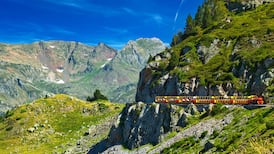In the front room of what was once the KGB headquarters, at the edge of Tartu’s Old Town, Ahto Külvet is playing records from his trove of bootlegged Soviet-era classics. From The Stooges to The Bee Gees, their covers feature local twists such a hammer-and-sickle belt buckle on a Bruce Springsteen LP, and Cyrillic script everywhere. Külvet opened his shop, Psühhoteek, after his wife declared his collection overwhelming.
“You’ll like this,” he says, distracting me from contemplating Yuri Gagarin’s spoken word album. He spins a Soviet meditation track, designed to stop you drinking and smoking. The only word I can make out is “vodka”. “He’s telling you it’s bad,” smiles Külvet. Later I test its effectiveness with excellent Estonian vodka martinis. The vodka wins.
Estonia is a country of contrasts, and of adventure. It has a population of just 1.8 million, is largely flat, swathed in vast acres of forests, and has a jagged history of invasion and colonisation. By the end of my five-day trip, I will have swum in the Baltic Sea (currently warmer than the Irish Sea), taken late-night saunas, passed forests of bears and wolves and feasted on delicious food, including their speciality black bread. I will have climbed a medieval tower to discover an art installation of ceramic skulls under the rafters, and discussed “the poetry of unknowing” late into the night with a jazz drummer at Philly Joe’s.
Exploring is easy. Everyone I meet speaks English (my Estonian is nonexistent), and layers soon reveal themselves. There are Nordic flavours to things: Finland is so close, some commute to work in Helsinki; and the southern border is shared with Latvia, but these days, Russia to the east is a trickier presence. Some strides in rapprochement over the harsher aspects of Estonia’s history have been halted by the Russian invasion of Ukraine, and older feelings can be on people’s minds.
READ MORE
This year’s European Capital of Culture, Tartu, is a gem of a place. It is just 35 miles from the Russian border and was selected as Culture Capital in August 2019, more than two years before the invasion, but the timing, and Tartu’s theme: Arts of Survival; now seem extraordinarily prescient. By “survival”, they actually mean the skills and knowledge we need to live well, and the programme is innovative and optimistic. Still, echoes of the Soviet era in Estonia are everywhere, and are living memory for many.
We go to the Estonian National Museum, built on a former Soviet airfield. This incredible building, which follows the lines of the old runway, was opened in 2016. Alongside special exhibitions on surrealism and the history of nightlife, I marvel at the central exhibit, telling the story of Estonia, from the Stone Age. Crossing into the area dealing with the Soviet period, searchlights pick us out and give us pause. Monitors tell stories of mass Stalinist deportations, whole families spirited away to Siberia. At the same time, many Russians were “settled” in Estonia, to the extent that today more than a quarter of the population is Russian speaking, many with divided loyalties.
In a thread of extraordinary moments, one in particular stands out: in 1989, an estimated two million people joined hands across Estonia, Latvia and Lithuania in an unbroken human chain, quietly insisting on independence. “I was there,” says Katrin Alekand, our museum guide. She says she had grown up being taught that the western world wanted to destroy Tartu. She was 10 when the Baltic Way took place. “My parents brought me; you can’t imagine.” This was before the internet kicked in, or mobile phones. Buses were organised, and local radio carried information. It was entirely peaceful. She gets goosebumps as she speaks, and I tear up thinking about it.
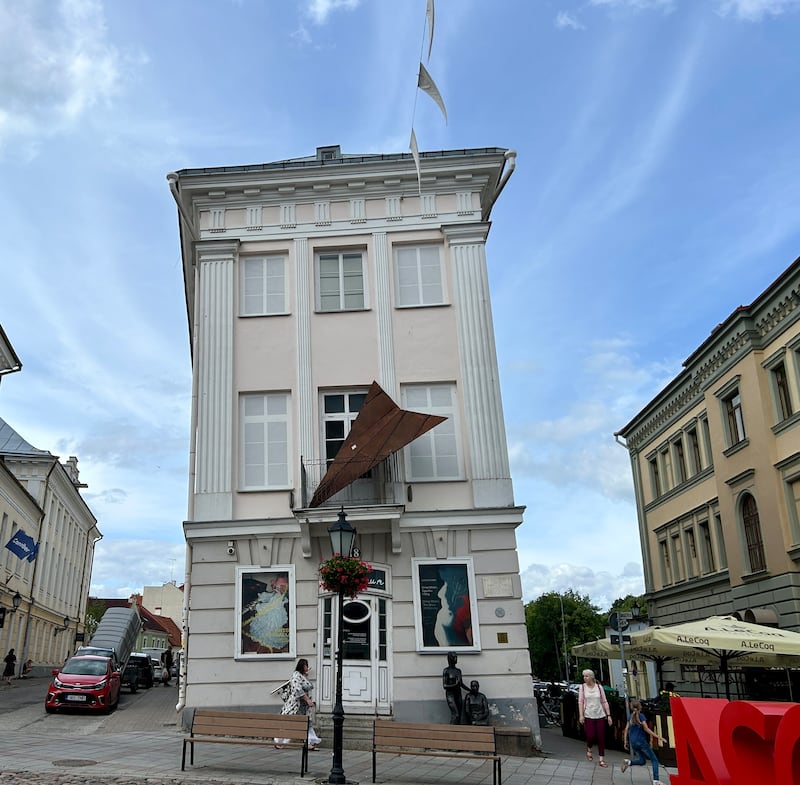
The second World War gouged out large chunks of Tartu, replaced in places by contemporary architecture, and in others by public parks, although a core old town survives, with plenty to visit, including the intriguingly leaning (it was built on marshy ground) central art gallery just off the main square. There is lots of building going on, and a vibe of possibility to the place that suggests there are still spaces and opportunities for artists, a feeling amplified by visiting a large dilapidated building that is being wildly painted by street artists from around the world for the annual Stencibility festival.
Somewhat tidier, the Widget Factory (Aparaaditehas) is a cultural quarter in a former closed-off Soviet factory. “They claimed they were making broken umbrellas,” I’m told, wryly. “It was more likely parts for nuclear submarines.” I watch some contemporary dance rehearsals; visit TYPA, a brilliant printing centre; and buy a book of poetry at Biblioteek, where Kristel Kalda proudly shows me the new Estonian translation of Ulysses and tells me she was inspired to open her shop after a visit to Dublin’s Winding Stair. The programme for Tartu 2024 is fascinating and eclectic, leaning in to Estonia’s recent legacy of technological innovation alongside more traditional forms. It extends into the hinterlands, so there is plenty to entice.
Part of the aim of the Culture Capital programme is to bring people together across borders, and the same is on the minds of the organisers of the Tallinn Fringe Festival, which this year features a special Irish Street Performance Showcase among the attractions. In Tallinn I have lunch with Jana Levitna, a comedian and feminist advocate. Levitna, who is of Russian ethnicity, is co-creator of Pussy Jam, and is curating a programme of Russian language stand-up for Fringe. Over braised elk, she tells me how fringe and comedy can loosen prejudices, and maintain communication at times when extreme views and extreme hurts push some towards shutting things down. “But do you know what cracks everyone here up?” she asks. “Jokes about potatoes.” The mind boggles.
Fringe founder Dan Renwick brings me on a venue tour: from the Old Town Square (the entire old town is beautiful, and a miraculous survivor of the war’s bombing raids), to a punk club on the edge of the city, to the Paavli Kultuurvabrik, a fabulous, sprawling spot with a DIY vibe that makes you pray no one thinks to want to gentrify it. “It started as a three-day festival,” says Renwick. “Now it’s 31 days, and more than 70 per cent of the programme is in English.”
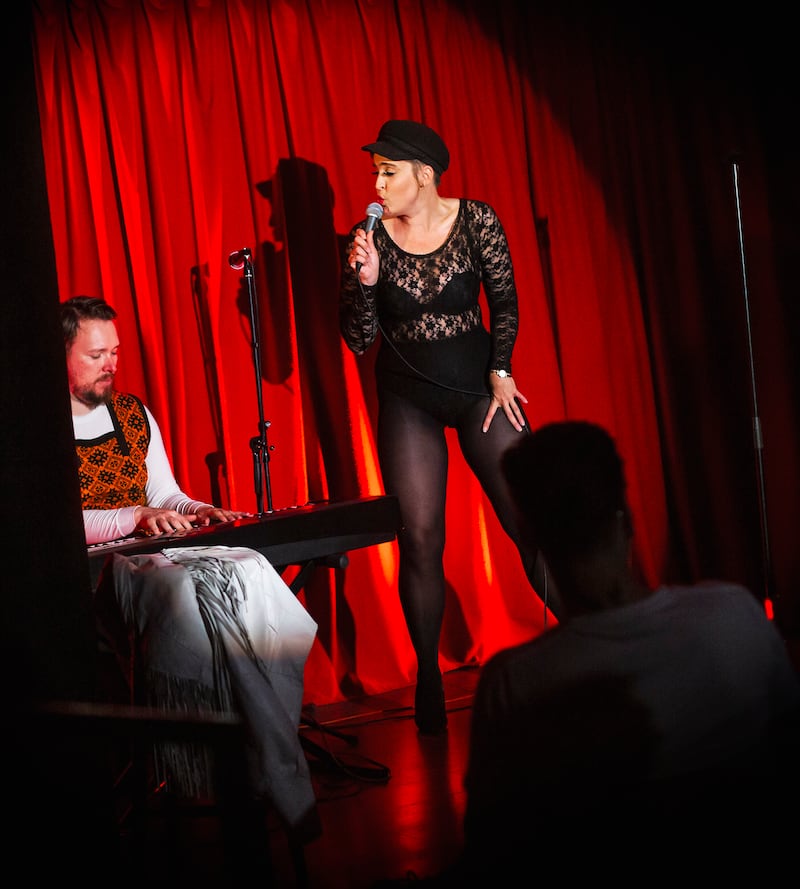

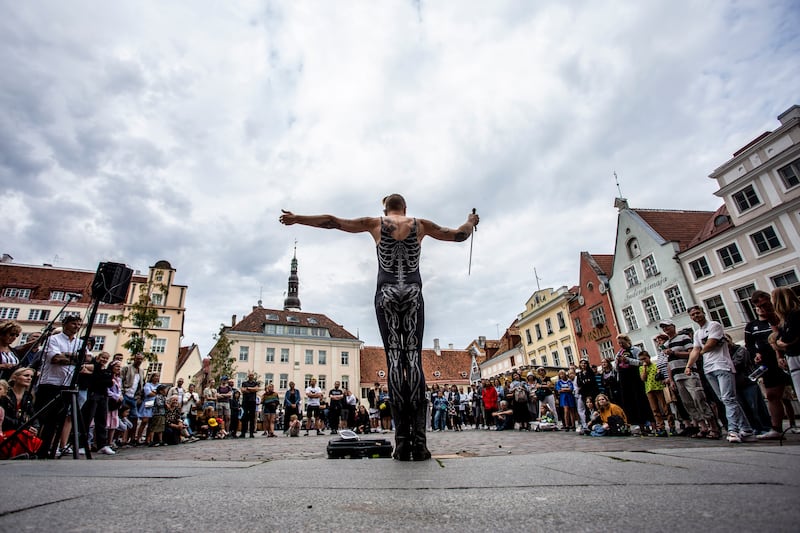
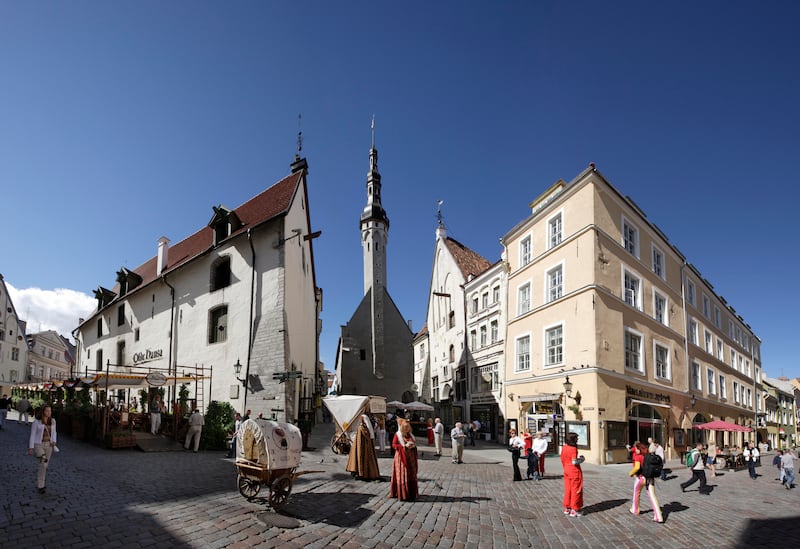
Renwick’s own venue, Heldeke! was once a brothel and, as a result, is one of the few cabaret and comedy clubs you’ll find with its own sauna and plunge pool. Sauna Social nights take place throughout the Fringe, alongside shows by artists including Kaisa Ling, an effervescent burlesque performer with a skewering sense of humour, who is also a Fringe ambassador. Like Levitna, she is passionate about the Fringe’s role in creating space for difficult conversations, and for having fun.
One of the joys of a festival such as the Fringe is the licence it gives you to explore. We nose around the Telliskivi Creative City area, a thriving, privately developed cultural quarter that should give the creators of Temple Bar pause for thought. There, sessions will take place at a vintage clothes shop. Rounding the night off at the aforementioned Philly Joes, another Fringe venue with a lovely louche vibe. We sip wine to the strains of excellent jazz, while behind us a couple play chess over a seemingly endless round of espresso martinis.
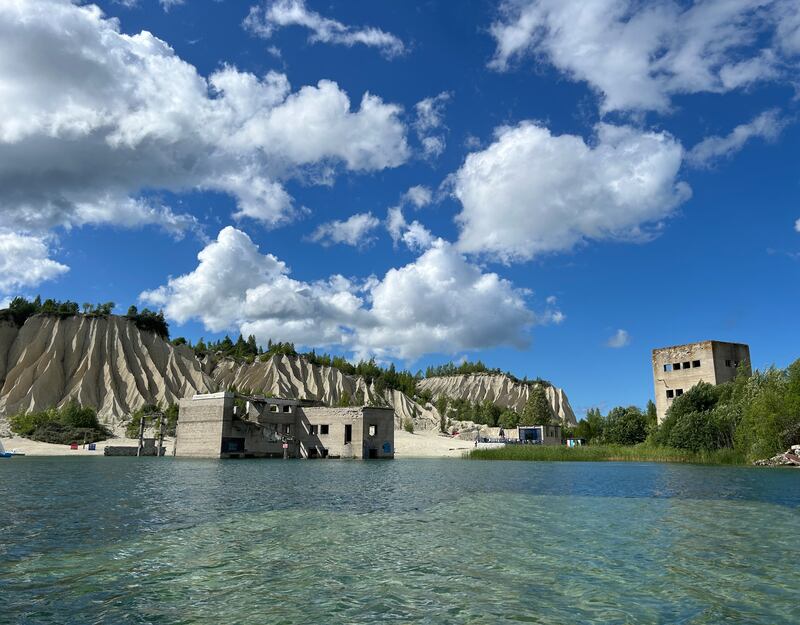
Getting out of the city on my last day, we head to Rummu Quarry, on the site of a former Soviet prison. After an “accidental” flood, the quarry was abandoned, and later the prison too. Today you can swim, hire pedalos, snorkel or dive among the drowned buildings and woodlands. It is an extraordinary experience, and one I will never forget. As southern Europe swelters under a succession of heatwaves, Estonia has milder temperatures, and a changeable weather pattern. Pack a waterproof and a layer or two, and visit this remarkable country that has so many affinities with our own. Fringe and Tartu 2024 are just the icing on a very tasty Estonian cake.
Tallinn Fringe Festival runs August 18th-September 18th, with 165 events across 14 venues. Tartu 2024 events continue until December. Gemma Tipton was a guest of Visit Estonia and Tartu 2024.
Getting there and getting around
Ryanair have daily flights to Tallinn, flight time about three hours. There is a regular coach service from Tallinn to Tartu, journey time approx 2½ hours, tickets from €10. Book in advance at tpilet.ee. Tartu is very walkable, and Tallinn has an excellent tram service. Download the Tpilet app to use the QR ticketing system.
Where to Stay
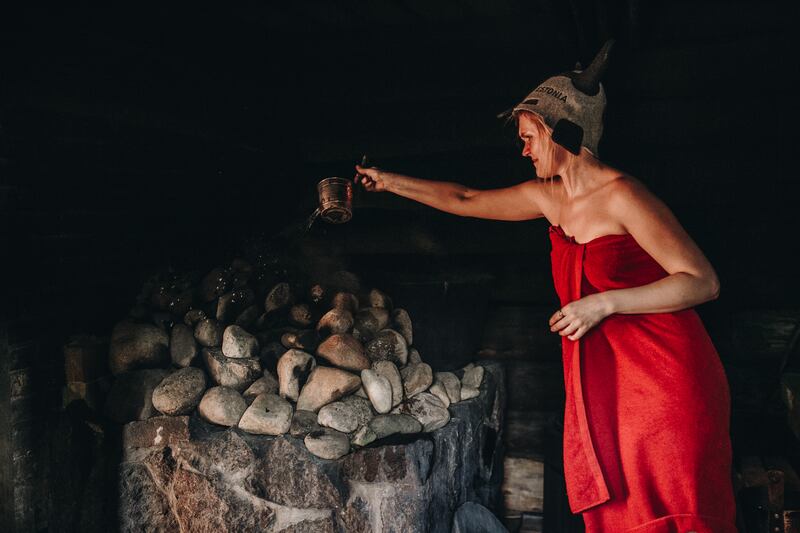
Hotel Lydia in the heart of Tartu Old Town is luxurious and comfortable with an excellent restaurant and a fabulous sauna. B&B from €103 per room. The central and achingly cool Hektor Container Hotel has very comfortable shipping containers for bedrooms, and a vibe that could be described as industrial cosy. From about €80 per room.
Where to eat
Tallinn and Tartu are not behind when it comes to great places to eat and drink. Don’t miss local speciality black bread, and expect plenty of fish, with vegetarians well catered for. In Tartu: enjoy riverside dining, and a wood-fired grill at TOKO; find tasty Estonian and international classics in an atmospheric old building with a lovely terrace at Vilde and Vine, where you can also book blindfold dining, if you’re so inclined; get fabulous fine dining and excellent cocktails at Michelin-listed Hõlm; and excellent Italian at Pompeii on Rüütli, which is lined with bars and snack spots, and thronged with students in term time. For more sophisticated cocktails head to chic basement spot, Blood Milk Water.
In Tallinn: find hipsterish treats at F-hoone in artsy Telliskivi; dine in modernist hotspot Pegasus with a menu to match its great views; Rataskaevu 16 is a charming old town spot with Estonian classics, and handwritten compliments served with your (excellent) coffee; and head for the fine dining heights at Michelin-listed Horisont, on the 30th floor of Swissôtel Tallinn, where the tasting menu will have you drooling.








